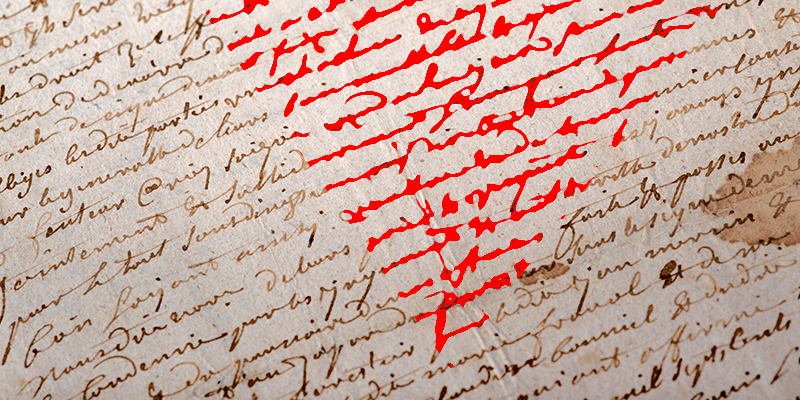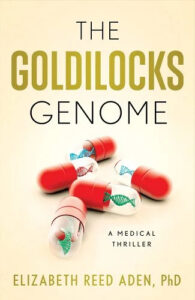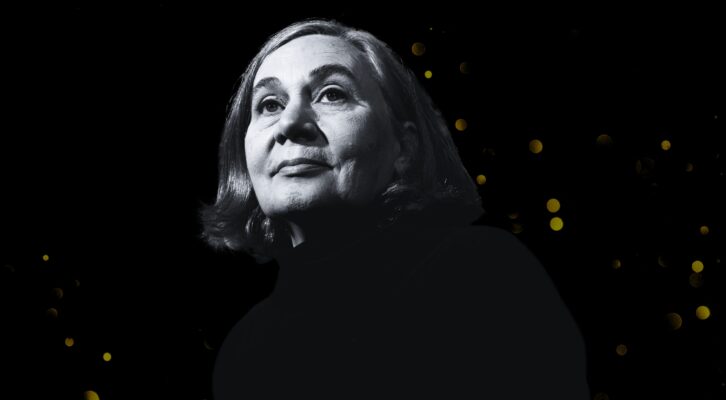“Aunt Betsy, what do we do with these boxes? They’re filled with paper,” my nephew shouted across the large playroom.
In preparation for the estate sale, we were cleaning out my mother’s office, something that hadn’t been done in 32 years. We’d sorted through medical files, personal diaries, books, magazines, photographs and even empty wine crates. The only paper that we’d found to date was in boxes that contained unused stationery—engraved with her name and address.
I looked at the boxes. They were the same vanilla-colored glossy cardboard that held letter-size stationery. “Bring it here so I can look at it.”
I opened the first box. The top sheet was typewritten with the words Dune House by Eunice Mays Boyd. I thumbed through the perfectly clean manuscript set in San Francisco. The second page read, “Dedicated to Marilyn Reed Roberts”. My mother. It was finished sometime between 1948 and 1950 when she was married to my father. The second box was much lighter. I opened it. Slay Bells, a Christmas murder mystery also set in San Francisco. The third box looked more worn and held, One Paw Was Red.
I flipped the pages in this last box and saw a familiar name, F. Millard Smythe. I understood, it was the fourth mystery set in Alaska. Her three published mysteries took place in Alaska, featuring a small, unassuming grocer and amateur sleuth. Eunice won awards and received accolades for her Alaska cozy mysteries Murder Breaks Trail, Doom in the Midnight Sun, and Murder Wears Mukluks. In my hands, I held the fourth book in this series. The last of the Alaska mysteries.
Eunice Mays Boyd was my godmother and I called her Nana. I knew she had written a book set in Europe which she began when she retired from the University of California; I’d read that manuscript when I was twenty years old and in college. The plot was clever with numerous twists and red herrings—a classic Christie-style “whodunit”. I read the manuscript, typed on yellow draft paper with penciled-in corrections, in one sitting. Her last five years were filled with travel to Europe and this mystery was set in France with a bus tour traveling from the Roman ruins of Nîmes to the medieval walled city of Carcassonne. She died soon after I read the book. When her house was cleared, my mother rescued that manuscript and gave it to me. The 250 pages were held together on a brown pressboard clipboard.
For forty-five years I kept that manuscript in its clipboard. When my time became more flexible, I thought it would be fun to see some of the sites she described in A Vacation to Kill For. In 2014, I spent five days in Carcassonne where I re-read the book, walked the places she described, and confirmed her descriptions. At the end of the trip, I wondered what might be involved to publish this murder mystery. That was as far as I got…a thought.
But that all changed when I discovered the other three unpublished murder mysteries. I read them. I knew the timeframe for Dune House. Slay Bells, also set in San Francisco was near the Stonestown shopping center, where we lived between 1957 and 1963. One Paw Was Red had to have been written after Murder Wears Mukluks (1945) and before Dune House between 1945 and 1947.
Eunice had lived in Fairbanks, Alaska for twelve years. She began to write as a way to pass the long winter nights and dark winter days. She wrote about the Alaska she knew—the Alaska of the 1930’s and early 1940’s just before the United States entered World War II, when she divorced and returned to her family’s home in Berkeley, California. Murder Breaks Trail (1943) was followed by Doom in the Midnight Sun (1944) then Murder Wears Mukluks.
Nana regularly participated in the Berkeley Writers Circle. I remember her going to meetings on Saturdays then coming home enthused with ideas and new, clever ways to murder. She read two to three cozy mysteries a week and prided herself on identifying the killer well in advance of the denouement. With her bed-ridden mother, Mabel Ainsworth Mays, we watched Perry Mason and I would engage in the conversation and try to find the guilty party—Nana always won!
One day, when I came to her home for a routine bi-monthly weekend, she gave me a Nancy Drew mystery. I finished it that night and the next morning she pulled three small leather bound books out of the bookcase. Her books. She said the publisher, Farrer Rinehart, had given her these special copies. Next, she brought out a hardback book with a red and white cover—The Marble Forest (1950). She proudly opened the book to the first page filled with signatures.
“Nana, what’s this? Why are there so many signatures,” I asked.
“A group of us decided to write a mystery together. Each of us wrote at least one chapter. We were all members of the San Francisco chapter of Mystery Writers of America. Twelve of us participated and I wrote the third chapter, which is why I am third in sequence.”
I counted the autographs, “But there are only eleven autographs.”
I looked at the book’s cover and saw the author was Theo Durrant. “Okay, but who’s the author?”
“All of us but one. Virginia Rath (The Dark Cavalier) died in 1950 before we got copies of the book and couldn’t sign. Her health was failing so we decided to use letters from the healthy eleven, so…Theo Durrant has eleven letters. The name was created by using one letter from each of our names. I am the “E”, Anthony Boucher is the “H”. Look.”
It wasn’t obvious. Then she scribbled on a piece of paper how the name was derived:
Terry Adler (On Murder’s Skirts)
AntHony Boucher (The Case of the Seven of Calvary)
Eunice Mays Boyd (Murder Breaks Trail)
Lenore Glen Offord (Murder on Russian Hill)
Dana Lyon (The House on Telegraph Hill)
Cary LUcas (Unfinished Business)
Richard Shattuck (The Wedding Guest Sat on a Stone)
William WoRley (My Dead Wife)
Allen Hymson (San Francisco writer)
Florence OsterN Faulkner (Wedding for Three)
Darwin Teilhet (Death Flies High)
I opened the book to the blurb which began, “How long could a four-year old girl live buried in a casket?” It scared me so I closed the book but never forgot the opening. The Marble Forest (1953) became the basis for the move Macabre (1955) starring Jim Bacchus. When I was older, we watched it on television with my godmother. Although proud of her accomplishment, she pointed out all the places the film either cut corners or didn’t follow the book. The result—we saw the movie at least two more times with and without commentary.
Later I discovered that three of the authors used pseudonyms. Anthony Boucher (or William White) was a well-known local author, writer and critic. The other pseudonyms belonged to women who wrote under men’s names (Allen Hymson = Alma Hymson, Richard Shattuck = Dora Richard Shattuck).
These writers were born in the first decade of the twentieth century and were avid readers during the Golden Age of Mystery Writing dominated by the British authors Agatha Christie and Dorothy Sayers. The SF Bay Area writers were all in their forties, had honed their skills and created clever whodunnits in local venues. They were part of the Golden Age of American Cozy Mystery Writers.
In all those years, after the success of The Marble Forest/Macabre, she wrote but seemingly stopped in the early 1960’s. She never mentioned her unpublished manuscripts. It wasn’t until she retired that she put fingers to keys.
***
What to do? I now had a critical mass of manuscripts. I felt an obligation to honor Eunice’s memory and to let others enjoy her skillful, intelligent writing. Thus began my journey. First step was to convert the typed pages into a Word document—Done. The next step was a manual edit.
Then, a local editor suggested, why not get the rights to her published books and ensure I had the literary rights. I thought I had these rights, but couldn’t find a copy of her will so a literary lawyer pointed out that possession didn’t count for nine-tenths of anything.
Fortunately, I grew up knowing members of my godmother’s extended family. Even though Nana had no children, her niece, Nancy, and family visited the Berkeley home frequently. Nancy was also friends with my mother and they kept in contact through the years. Well, up to a point. Nancy died decades ago and I’d lost touch with her children after Eunice’s death in 1971. Enter LinkedIn. I found her grandnephew and sent him a note. We connected online. He suggested I get in touch with his brother who was the keeper of their family’s pioneer history. I did. With their help, I was able to identify her surviving heirs: their sister and Eunice’s nephew, Harry.
Back to the internet. I spent hours figuring out which Harry Mays it was, deduced the email, then bingo, found the phone number. I dialed it and miraculously a woman answered the landline.
“Hi, I’m Eunice Mays Boyd’s goddaughter. My mother was Mal Matys. I knew Harry’s parents George and Harriett and I was the little girl at the house on Forest Avenue.”
“I remember Mal well,” she replied.
We chatted for a while and she told me Harry wasn’t very well. She put Harry on the phone and I told him about the books and my desire to publish them.
“So, would you like me to sign a release?”
“Yes!” I replied.
The lawyer wrote a release and I sent it immediately to Harry with two copies and a self-addressed stamped envelope. Ten days later I had his signature. Two weeks later the grandnephews and grandniece gave their permission and six weeks later Harry was dead. Whew—just in the nick of time.
I had what I needed to publish the new books, and, decided to republish her “classic” works. My task escalated from four books to seven. But…I needed the rights to republish her Alaska mysteries. The internet came to the rescue with a copy of the standard Farrar & Rinehart contract from 1943 which required giving them 90-day notice. Notification—done. I was good to go.
Next step…find a publisher. I contacted two publishers who reviewed books submitted directly by authors. Otto Penzler at Mysterious Press wrote back immediately saying that he remembered reading Murder Wears Mukluks and found it delightful. He would be happy to republish her Alaska mysteries and maybe One Paw Was Red.
Remarkably, the next day I received a reply from Level Best Books wanting to learn more. Verena Rose was intrigued because Eunice had written during the Golden Age. After reading Dune House, Level Best agreed to publish all seven books. Dune House and Slay Bells were published in December, 2021 and A Vacation to Kill For was published in 2023. Murder Breaks Trail will be republished in 2024 followed by Doom in the Midnight Sun. Murder Wears Mukluks and One Paw Was Red are in the future queue. It was a great way to pass time during the Pandemic lockdowns.
My journey has refreshed many memories and reconnected me with Eunice’s family. It also introduced me to the world of writing and publishing. At the time, the Level Best team ran Malice Domestic. I decided to attend and had no idea of what to expect.
I was overwhelmed by the availability of free mysteries, the ease of meeting and talking with accomplished writers. Maureen Jennings (Murdock Mysteries) even suggested that F. Millard Smyth’s series could become a television series set in 1940s Alaska. I was asked to participate as a last minute replacement on a panel to talk about what makes a good cozy—some internet research and Nana’s books helped me survive the experience. It was fun to meet other Level Best authors and be part of a group.
I am proud to have undertaken this journey. It has been hard work, but I’ve learned. It is an adventure to enter into an entirely new discipline. Nana inspired me to write my own books. My medical thriller The Goldilocks Genome (May 21, 2024 publication date) and HEPATITIS Beach, a non-fiction coming-of-age adventure about my doctoral fieldwork experience studying hepatitis B virus in Melanesia.
The lessons I’ve gleaned for my own literary estate include the importance of filing a copy of all book-related contracts with one’s lawyer and specifically gifting one’s literary rights.
I am grateful for the experience of bringing Eunice’s “lost” murder mysteries to life and for the time I spent with her. A time capsule is a gift too precious to ignore.
***
















